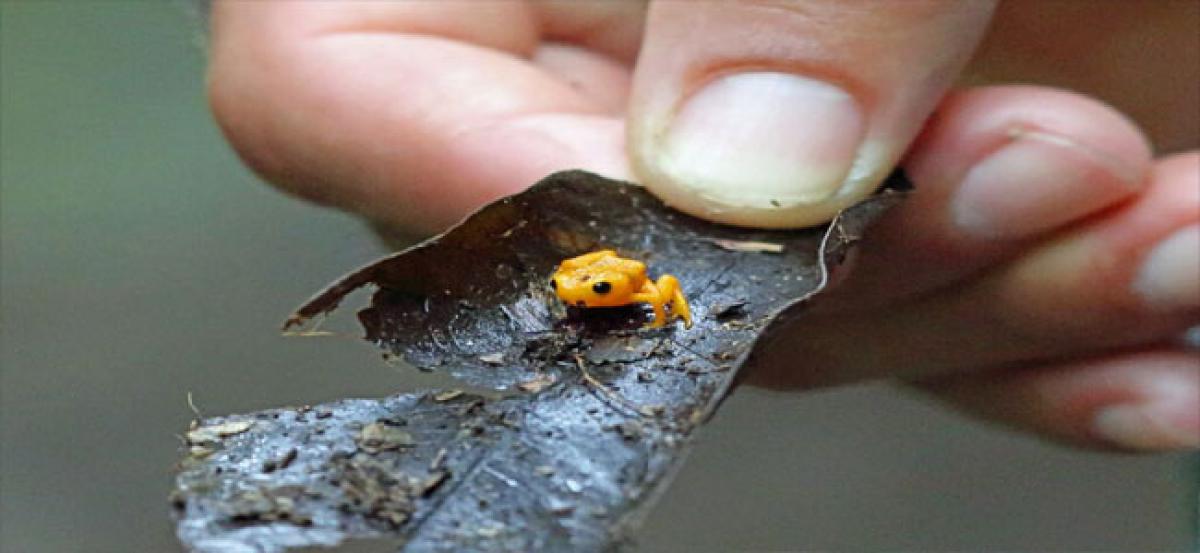Live
- Lightstorm, IIT Madras to launch employment skilling initiative
- RR brace for Narine spin treat as KKR eye top spot
- IT stocks lead Sensex plunge of more than 600 points
- Skills to succeed at work
- 13 killed in head-on collision in Bangladesh
- 3.11% fall in FY24 exports
- Healthcare-startup Medulance secures $3 mn Series A funding
- Ambuja acquires My Home’s cement unit for `413.75 cr
- Rareism inaugurates outlet in Hyd
- Wholesale inflation at 0.53% in March
Just In

Two species of pumpkin toadlets, which are among the smallest frogs in the world and found on the leaf litter of Brazil\'s Atlantic forest, cannot hear the sound of their own calls, new research has found.
London : Two species of pumpkin toadlets, which are among the smallest frogs in the world and found on the leaf litter of Brazil's Atlantic forest, cannot hear the sound of their own calls, new research has found.
The findings offer a unique case in the animal kingdom of a communication signal persisting even after the target audience has lost the ability to detect it.
"We have never seen this before: These frogs make sounds that they cannot hear themselves," said Jakob Christensen-Dalsgaard, Associate Professor at the University of Southern Denmark.
The researchers found that the part of the ear responsible for high-frequency hearing is functionless in these species.
Because these tiny frogs are brightly coloured, diurnal and known to use visual signals, the researchers believe that visual communication has replaced acoustic communication.
The movement of the throat when males are calling could constitute a visual signal, in which case the call itself would represent a by-product of the true signalling behaviour.
Most male frogs call to signal their presence to the opposite sex and find a mate, but this is costly as it could attract predators and parasites, and it uses up energy and time.
Like many brightly-coloured tropical frogs, pumpkin toadlets are highly toxic, which may lower the risk of predation when they are calling.
The singular communication system in these pumpkin toadlets is a first example of vestigial sound communication, Christensen-Dalsgaard said.

© 2024 Hyderabad Media House Limited/The Hans India. All rights reserved. Powered by hocalwire.com







